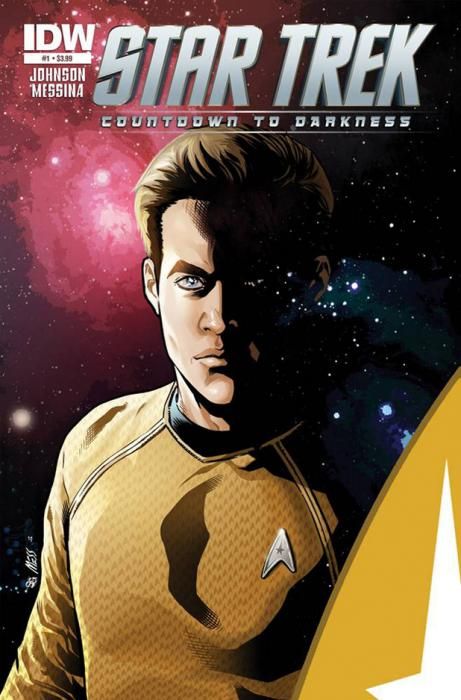"Star Trek: Countdown to Darkness" #1 by Mike Johnson and David Messina (with a story credit from Roberto Orci) is the official prequel to "Star Trek Into Darkness," this year's follow up to JJ. Abrams' somewhat controversial "Star Trek" reboot -- although at this point, it's somewhat tough see where that lead-in lies.
The story opens with Kirk and Spock apparently haunted by the events of the first film and the lives they're leading as a result. Johnson opens with a recap by way of a dream sequence, which is a nice way to ease readers back into the world, using familiar events in an unfamiliar way. It reminds us of what has gone before, as well as giving us a window into Spock's mental state. Kirk, meanwhile, is more literal -- he simple articulates his feelings directly in a personal log.
Johnson certainly has the character voices down, and the contrast between their attitudes is perfectly illustrated by the way they're depicted. With Spock, the conflict is internal and violent. In Kirk it's honest, open, heart-on-sleeve stuff. Luckily, it's a confident beginning, because after that, things get a little bogged down in exposition. There are 6 or 7 straight pages of expository conversation that slow the book's pace right down. It's well-illustrated expository conversation, designed to reintroduce the rest of the crew, but expository conversation nonetheless.
Messina's artwork is all right, but like many licensed comics it suffers because characters have to look like their actors first and tell the story second. You can recognise their faces, but the expressions are often glassy and staid. Sadly, although Messina's background work offers a detailed and accurate representation of the ship, there's too much dialogue on many of the pages to really take in the full glory. The visuals only really sing on the splash pages and less wordy exterior shots.
As a prequel, though, it seems more concerned with setting up the emotional state of the characters than providing clues as to the movie's plot. It's perhaps understandable at this still-early stage, but after the insight offered by 2009's "Star Trek: Countdown", fans might come in expecting more.
The final pages do offer an interesting twist for fans of Trek lore, however, with the introduction of a familiar(ish) figure in an unfamiliar situation. It's a strange choice, and one unlikely to have a big impact if you're not steeped in Trek trivia. Probably not the best choice for a lead-in to something with much wider appeal, but it just about works on its own terms despite the clunky language the character uses to explain who he is.
Still, it ultimately does what most licensed comics do -- provides a story that looks and reads good enough for a general bookstore audience, but doesn't really meet the much higher standards of monthly comics most CBR readers will be used to. It's an issue of accessibility as much as technical ability, but that's explanation rather than excuse. It is what it is. Not as good as the real thing, but better than nothing.

